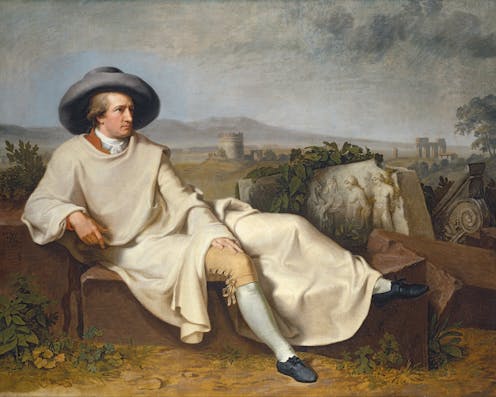The Sorrows of Young Werther at 250: Goethe’s dangerous romantic hero influenced fashion, fiction – and Napoleon
- Written by The Conversation

In our Guide to the Classics series, experts explain key works of literature.
This month marks the 250th anniversary of the publication of Johann Wolfgang von Goethe’s celebrated and controversial novel Die Leiden des Jungen Werther. Commonly known in English as The Sorrows of Young Werther, it has endured in the popular imagination.
Goethe wrote the semi-autobiographical novel as a young, idealistic man, spurred by his infatuation with the engaged Charlotte Buff. Later in life, cutting a more sober figure, Goethe would look back uneasily on the frenzied product of his youth and “the pathological condition from which it sprang”.
Werther, he said, haunted him from the imaginary grave like a vengeful ghost.
Storm and stress
In essence, The Sorrows of Young Werther is a maudlin tale of unrequited love. It is an epistolary novel, presented as a collection of letters written by Werther to his friend Wilhelm. The letters reveal Werther’s sensitive and artistic soul, as well as his passionate temperament.







